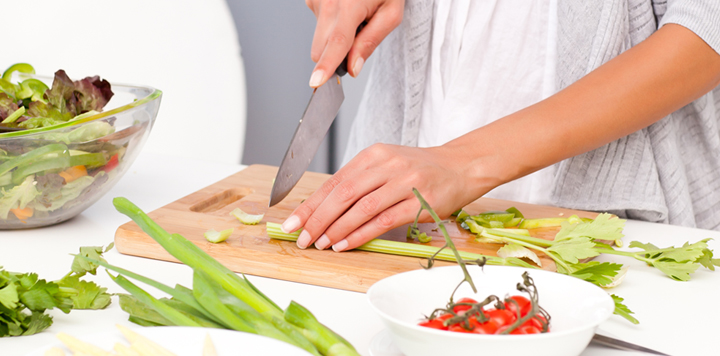Accidents happen in the kitchen, and knife cuts on the finger can be both painful and alarming. If youve ever found yourself wondering how to treat a knife cut on finger, dont worry. This comprehensive guide will provide step-by-step instructions and expert advice to help you handle the situation with confidence. Whether youre a seasoned chef or an occasional cook, knowing the right steps can be life-saving.
In this article, you’ll explore not only the immediate steps but also long-term tips for preventing such injuries. Read on to find out everything you need about treating, protecting, and healing from a knife cut. Plus, we’ll share tremendous tips on handling kitchen knives safely for the future.

What to Do Immediately After a Cut
When you cut your finger, acting fast is essential. Follow these shocking steps:
- Stay Calm: Panicking will only make the situation worse and may cause more bleeding.
- Wash Your Hands: Use mild soap and lukewarm water to clean your hands, but avoid touching the wound directly.
- Stop the Bleeding: Apply gentle but firm pressure with a clean cloth or paper towel for 5 to 10 minutes.
Essential First Aid Supplies to Keep Handy
Every kitchen should have a first aid kit. Here’s a list of items you should keep ready:
- Antiseptic Wipes: To clean the wound.
- Bandages or Gauze: To cover the cut.
- Medical Tape: To secure the dressing.
- Antibiotic Ointments: Such as Neosporin, to prevent infection.
Having these supplies ensures that you’re delighted to handle any minor kitchen injury swiftly and safely.
How to Clean the Cut Effectively
Cleaning is the most critical part of treating a knife cut. Heres how:
- Flush the wound with warm water to remove dirt or debris.
- Pat it dry with a clean, lint-free cloth or paper towel.
- Use an antiseptic solution or wipe to disinfect the area.
When to Seek Professional Help
A minor knife cut can often be treated at home. However, seek professional help if:
- The bleeding wont stop even after applying pressure for 10-15 minutes.
- The cut is deep, and you can see fat, muscle, or bone.
- The wound forms an uneven edge or is jagged.
- You havent had a tetanus shot in the past 5 years.
If any of these apply, dont hesitate to visit a healthcare provider.
Steps for Dressing the Wound
Once youve stopped the bleeding and cleaned the wound, follow these steps:
- Apply Antibiotic Ointment: Use a small amount to prevent infection.
- Cover the Cut: Place a sterile bandage or gauze over the wound.
- Secure it: Use medical tape to hold the bandage in place.
- Change Dressings: Replace the bandage daily, especially if it becomes wet or dirty.
Avoiding Common Mistakes
Many people unknowingly make their injuries worse. Some things to avoid include:
- Using cotton balls to clean the wound as they leave fibers behind.
- Ignoring signs of infection such as redness, swelling, or oozing.
For practical cutting skills, check out this cut with a knife.
Preventing Knife Cuts in the Future
Prevention is always better than cure. Follow these remarkable tips:
- Use a sharp knife, as dull knives require more force and are more likely to slip.
- Wear cut-resistant gloves if youre handling risky tasks.
- Practice proper cutting techniques. Learn more about cutting vegetables.
For more safety tips, check out this external guide on knife use: How to Use Kitchen Knives Safely.
Watching for Infections
Even with proper care, infections can happen. Signs to watch out for include:
- Increased redness around the wound.
- Pus or other fluid discharge.
- Fever or chills, indicating a systemic infection.
If you notice any of these, consult a healthcare provider immediately.
Practicing Kitchen Safety
Adopting safety practices can make your kitchen experiences smoother and safer. Learn how to cut an onion properly and protect yourself from potential accidents.
FAQs
- How do I stop the bleeding quickly?
- Apply firm pressure with a clean cloth for 5-10 minutes.
- Can I use a household item to clean a cut?
- Yes, you can use warm water and mild soap, but avoid alcohol or hydrogen peroxide as they can irritate the tissue.
- How long does it take for a knife cut to heal?
- Minor cuts usually heal within 7-10 days with proper care.

Conclusion
Knowing how to treat a knife cut on finger is essential for anyone working in the kitchen. By staying calm and following these steps, you can handle cuts effectively and speed up recovery. Remember, safety always comes first! Equip yourself with the knowledge and tools to make your kitchen a safer place. Always practice good knife-handling skills to prevent future accidents. Happy cooking!
This article contains affiliate links. We may earn a commission at no extra cost to you.


